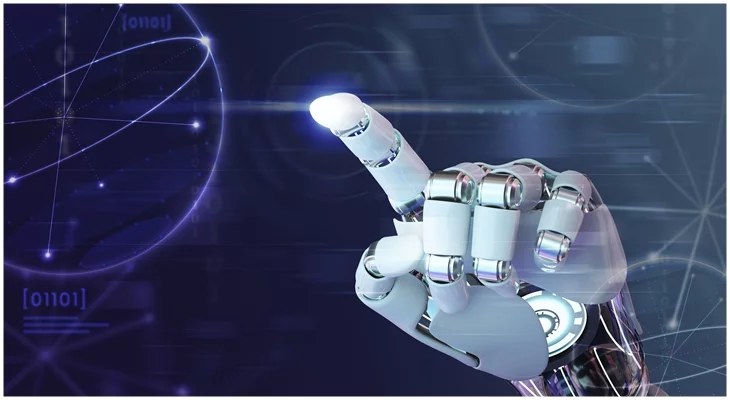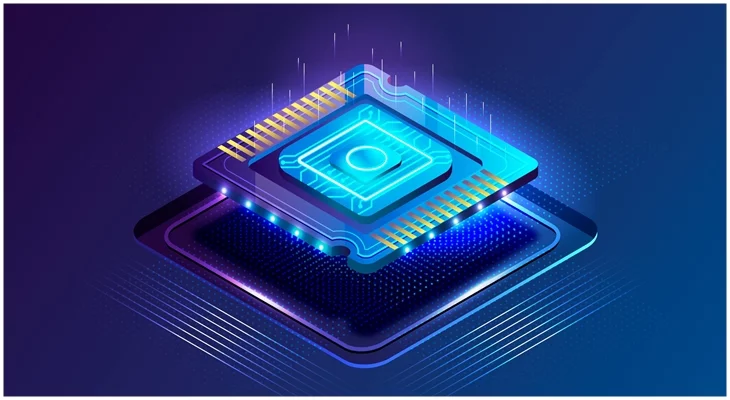Introduction
With technological advancements, narrow AI and general AI are gaining ground. We've been in the narrow AI space. We're heading in the direction of general AI. Narrow AI refers to AI that is only capable of performing a single task.
The term "strong AI" refers to a type of general AI that is far more sophisticated. This refers to a system that, like a human, can handle any generalized task thrown at it.
General AI
Artificial General Intelligence has reached parity with human intelligence. An AGI system can perform any task that a human is capable of performing. AGI systems can also perform tasks more efficiently than humans, only for a specific function assigned to them. But, they have no capability to perform any task that is not assigned to them. A human is less skilled at the task but can also perform a wider range of functions than AI applications.
Artificial intelligence (AGI) is a type of AI that we see in movies. AGI is also a machine that can solve any problem by displaying the general intelligence of a human.
Strong AI and deep AI are two terms for artificial general intelligence. This is a concept of a machine with general intelligence that can think, understand, learn. It can also apply its intelligence to solve any problem in any situation like humans.
Strong AI employs the theory of mind AI framework. It also helps to train machines to recognize needs, emotions, beliefs, and thought processes in humans, rather than replicating or simulating them.
Researchers working on AGI must figure out how to make machines conscious. This has to be done by programming them with a full set of cognitive abilities.
Narrow AI
Narrow artificial intelligence (narrow AI) is a type of artificial intelligence. In this, a learning algorithm performs a single task. Any knowledge gained from that task is not automatically applied to other tasks.
Narrow AI completes a single task without the need for human intervention. Also, language translation and image recognition are two popular narrow AI applications.
The vast majority of AI applications in use today begin as narrow AI. Narrow AI, also known as weak AI, is a type of artificial intelligence with limited scope.
Examples of narrow AI
Face and image recognition software
Weak AI systems find applications in Facebook and Google. They identify people in photographs which is a prominent example of the system.
Conversational assistants and chatbots
Google Assistant, Siri, and Alexa are examples of popular virtual assistants. It also includes simpler customer-service chatbots, such as one that assists customers in returning an item to a retail store.
Vehicles that drive themselves
Narrow AI applications include autonomous or semiautonomous cars. This also includes autonomous drones, boats, and factory robots.
Models for predictive maintenance
These models use data from machines. This data is often collected through sensors to predict when a machine part will fail and notify users in advance.
Engines that make recommendations
Weak AI systems are those that predict what a user will like or search for next.
Narrow AI and General AI Comparison
Narrow AI
General AI and Narrow AI have existed at the same time. We've been in the narrow AI space for a while now. We're heading in the direction of general AI. Narrow AI refers to AI that is only capable of performing a single task. For example, a spam filtering tool or even a self-driving car are all possibilities. These are all advanced technological applications.
Only the term 'narrow AI' can describe it. Watson, IBM's supercomputer that can beat human experts at Jeopardy. But, it still cannot compete with human experts. It can also eat up most of Wikipedia in the process and is only described as a "narrow AI" example.
For the time being, Watson remains narrow and rather weak. Weak AI is when an AI system exhibit intelligence in a specific field, but it remains a computer system that performs specialized tasks within that field.
General AI
General AI is a much more complex concept. This refers to a system that, like a human, can handle any generalized task thrown at it. The ideal of General AI is for the system to have cognitive abilities. It also should have a general experiential understanding of its surroundings as humans. At the same time, it has the ability to process data at much faster rates than humans.
As a result, the system would surpass human knowledge, cognitive ability, and processing speed. This would also result in a fascinating species-defining moment in which it surpasses the human species.
Here are some more ways to tell the difference between weak and general AI:
- Brief Definition
It is a type of artificial intelligence. It simulates intelligent human behavior and allows machines to solve complex problems.
General AI is still a science fiction concept. But when or if it becomes a reality, machines will have full human cognitive abilities. - Purpose
Narrow AI performs a set of pre-defined functions that it has been taught to complete or solve.
Strong AI will have its own mind, allowing it to complete any task that its "mind" can imagine. - Awareness
Self-awareness is not achieved by weak AI.
Strong AI will be intelligent and self-aware enough to be considered truly intelligent.
Artificial intelligence will be classified as general or strong AI once machines can think and carry out decision-making and tasks without the involvement of humans. Until then, narrow algorithms designed to help machines complete tasks will continue to change our lives.
Advantages of General AI
Plan For the Future Using the Knowledge and Experience Gained
Humans also have the ability to plan for the future by drawing on their past experiences. As they gain more experience, they will also be able to use that information to create a plan and steer the future. Machines must rely on humans to program actions in narrow AI. The machines are incapable of devising a strategy for the future.
As Circumstances Change, Adjust and Adapt
Machines with general AI will also be able to adapt to changing circumstances. Weak AI or Narrow AI responds only to variables programmed into its algorithms. General AI has the ability to make decisions on the go.
Reasoning Ability
General AI, unlike narrow AI, will be able to reason. Machines with general AI will be able to assess a situation. They would determine a course of action even if it is outside of what a human has taught them.
Solving Puzzles
AI algorithms have competed in and won video games and chess matches. Those achievements show AI's ability to follow patterns and programs. A few perplexing issues exist where success is not yet determined. General AI will be achieved when machines can solve a puzzle like this.
Show Common Sense
Common sense is another very human quality. When a machine can't rely on programming for answers, it's sometimes necessary to use common sense. Weak AI is devoid of common sense. Machines will need to exhibit common sense to match human cognitive ability.
Consciousness
To achieve general artificial intelligence, machines must be capable of consciousness and self-awareness.
Above And Beyond the Realm of Mathematics
Machines with AGI can solve problems other than mathematical equations.
Recognize Emotions and Needs
Other intelligent entities' needs, emotions, thought processes, and beliefs could all be read by general AI. The theory of mind-level AI is what it's called. With this type of AI, there is nothing to simulate or replicate. But rather machines that understand humans.
Advantages of Narrow Intelligence
Bots and ANI
Bots, a growing field, are an excellent example of narrow AI in action. A bot is a piece of software that can perform automated tasks that are simple and repetitive.
The Ramifications of ANI for Customer Engagement
Bots powered by ANI can automate repetitive customer service tasks. They can search the knowledgebase, look up product details, shipping dates, order histories, etc.
Bots can provide consistency, accuracy, and speed in customer interactions. Unlike humans, they don't get bored doing the same task over and over.
Application in the Medical Field
It can concentrate on a single task and perform it far better than humans. For example, if you feed a deep learning algorithm enough pictures of skin cancer, it will become better at detecting skin cancer than experienced doctors.
Education
Current AI algorithms can assist teachers in identifying and addressing pain points in their students' learning. It will also help in identifying and addressing problems in their own curriculum. These AI algorithms are still a long way from acquiring the complex social skills that teachers need to guide students toward knowledge. But they can certainly assist teachers in improving their craft.
Daily Tasks Automation
Narrow Artificial Intelligence can automate the boring, repetitive parts of most jobs. It can also leave the parts that need human care and attention to be handled by humans. Customer service is an interesting example. Here AI-powered chatbots can handle the simple and trivial queries that most customers have. Human employees can focus on handling more complicated cases. Thanks to natural language processing and generation. As a result, customers are less frustrated, wait times are shorter, and employees' time is better utilized.
Conclusion
Before realizing AGI, we still have a long way to go. AI is evolving at a fast pace by achieving new breakthroughs and milestones on a regular basis. In comparison to human intelligence, AI also has the potential to multitask, recall and memorize information. It can work without interruption, perform calculations at lightning speed. AI can sift through lengthy records and documents and make unbiased decisions.
Now, general AI is currently out of our reach. But, many narrow AI systems are in use now, and their use is expected to skyrocket in the coming years. This will have an impact on our daily lives. It would improve convenience, social acceptance, medicine, education, privacy, employment, economics, ethics, and a variety of other areas.





